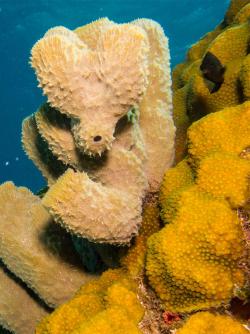Bunnies, eggs, and… Jesus Christ’s resurrection?
Question: How do colorful eggs and bunny rabbits relate to Christ’s death and resurrection?
Answer: Anyone familiar with biology can quickly recognize that rabbits do not lay eggs. What do those symbols have in common? Rabbits are noted for their proclivity to reproduce quickly, and eggs are considered a symbol of fertility.
So, what does fertility have to do with Easter? Many who celebrate the holiday do not recognize that Easter is not a biblical holiday at all—it is derived from pre-Christian celebrations of springtime fertility, devoted to pagan goddesses with names such as Ishtar, Astarte, and Ostara, from whom the name “Easter” is derived. Also, those who make a pun on “Son rise” and “sunrise” may not be aware that their Easter morning “sunrise” service—facing the direction of the rising sun during their worship—is directly condemned in Scripture. In Ezekiel 8:14–16, we find the Israelites “weeping for Tammuz” in a sunrise worship service, a practice God states that He abhors.
Making the Bad Good?
“Well, we’re just ‘baptizing’ a pagan custom and making it Christian,” some will say. But what does God say about that approach? The prophet Jeremiah recorded God’s very plain and straightforward command: “Do not learn the way of the Gentiles” (Jeremiah 10:2). He makes it just as plain in Deuteronomy 12:29–32, stating that He does not want to be worshipped in the manner that pagans worship their own gods.
So, does God want Christians to worship Him on Easter Sunday? You may be surprised to learn that there is no biblical record of Easter Sunday worship, and no command for us to practice such worship today! As regular readers of this magazine know, Christ died and was put in the tomb shortly before sunset on a Wednesday, just before the start of the annual Holy Day known as the First Day of Unleavened Bread (see Leviticus 23:6). We know from Scripture that Jesus was in the grave for three days and three nights—72 hours—which means that He rose right before sunset on Saturday! By the time the women came to the tomb on Sunday morning, He had already risen (Matthew 28:1–8)!
When the Scribes and Pharisees demanded to see a sign of Christ’s Messiahship, He said He would give them “the sign of the prophet Jonah” (Matthew 12:39; John 2:19). Indeed, He said that it would be the only sign He would give. Jonah was in the belly of the great fish for three days and three nights, and Christ would be in the grave for that same length of time. Note that this also exposes the later “Good Friday” custom as an unbiblical fiction, since a Friday burial would require Christ to have been in the grave until Monday evening, though Scripture clearly shows the grave was already empty when the women arrived on Sunday morning. (You can study this topic in much more depth with our free booklet Easter: The Untold Story. It is available from any of our Regional Offices, listed on page 4, or can be ordered online at TomorrowsWorld.org.)
How Christians Remember
So, if Easter Sunday is a false custom, and Christians are not to imitate the ways of the pagan cultures around them, how should Christians memorialize Christ’s sacrifice? Again, Scripture reveals the answer. The Apostle Paul told Christians in Corinth, “For indeed Christ, our Passover, was sacrificed for us” (1 Corinthians 5:7). During His final Passover meal with His disciples, Christ instituted new symbols of bread and wine, symbolizing His body and His blood (Matthew 26:26–28). Later, the Apostle Paul reminded the Christians in Corinth that this annual Passover observance was the means by which we should memorialize Christ’s sacrifice (1 Corinthians 11:23–26).
Christ’s body was broken for our healing (Isaiah 53:5), and His blood was shed for the remission of our sins (Matthew 26:28). So, Christians should not be celebrating a non-Christian holiday using bunnies and eggs and other symbols of fertility taken from pagan rites. They should be observing the Passover, as commanded by Christ and the Apostles, as the true memorial of His sacrifice.






